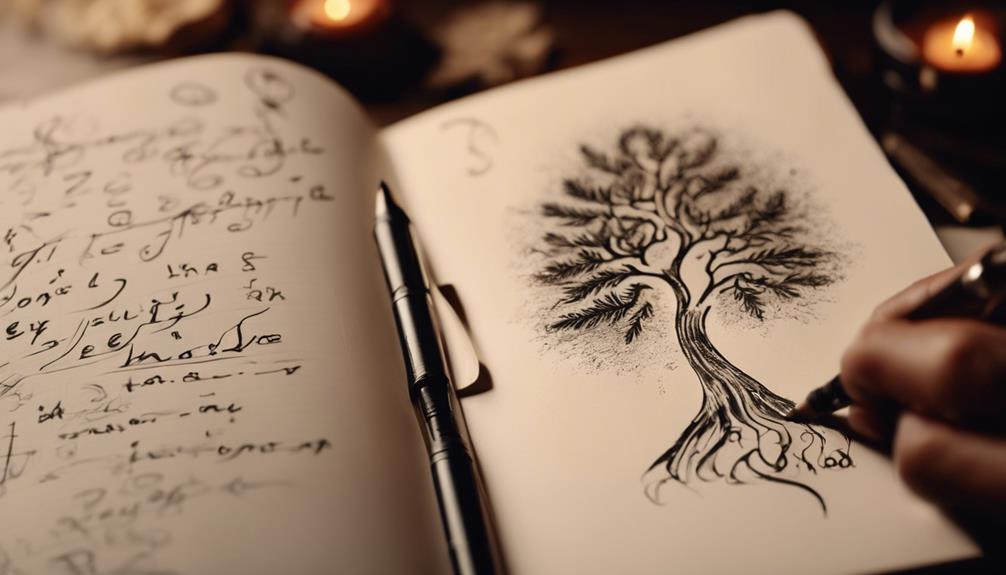Creating a logographic system in your conlang is like starting a garden. It needs patience, care, and creativity.
First, learn the basic principles. These are like the soil and seeds. Then, create meaningful logograms. Your imagination is the water.
Last, use these symbols in your language. This is the sunlight.
If you want to see how these tips can change your conlang, picture the rich world you could grow.
Key Takeaways
- Logograms must show key cultural ideas and the language's heart.
- They work better when they fit the grammar.
- Keep improving logograms to add depth.
- They give conlangs a special look and feel.
Understanding Basic Logographic Principles

Dive into logographic systems. Learn their key rules. You start a journey. Here, symbols mean more than sounds. They're words or ideas. Think of drawing a sun. It means 'day'. Or water waves that mean 'river'. This is logographics. They show ideas directly. They don't need alphabet letters.
You might think this sounds complex. But it's about making connections. Your brain links pictures to ideas well. Ancient civilizations, like the Egyptians and their hieroglyphs, did this. They told complex stories. You're using an old but creative way of thinking.
Creating Meaningful Logograms

Now you know the basics of logographic systems. It's time to make your own symbols. Making logograms is more than drawing. It's about putting the soul of your language into each symbol. Think of it as painting. But, you use cultural insights and linguistic patterns instead of brushes and colors.
Start by thinking about important concepts and objects in your language's culture. What symbols or elements could show these ideas visually? Aim to be clear and imaginative.
Here's a simple table to help you start:
| Concept | Suggested Symbol |
|---|---|
| Sun | A circle with rays extending outward |
| Water | Wavy lines or droplets |
| Friendship | Two interconnected circles |
These symbols are just the start. As your conlang grows, your logographic system will too. Each logogram should offer a view into the world you're building, sharing insights and stirring emotions. Keep it simple. Yet, don't fear to explore new ideas. Innovation comes from the bravery to try new things.
Implementing Logograms in Your Conlang

After crafting your logograms, integrate them into your constructed language. Think of your logograms as seeds. Plant them in your language's grammar and syntax. This process transforms symbols into a rich tapestry of meaning.
Decide where these logograms best fit. They might be nouns, forming names of people, places, and things. Or verbs, capturing action and movement. They could be adjectives, adding emotion and description. The choice is yours.
Consider how your logograms work together. Can you combine them for new meanings? This step is like using building blocks, each one contributing to a unique structure.
Keep it simple. You don't need a logogram for every word. Pick concepts central to your conlang's culture. These symbols will be the heart of your language, allowing speakers to express their deepest ideas and beliefs.
You're not just making symbols; you're creating a new way to see the world. Let your imagination guide you.
Conclusion
Now, you're ready to create your logographic system! Make symbols that show what they mean. Keep it clear, simple, and enjoyable.
As you add these symbols to your conlang, watch your language take on new life. Forget about being perfect; it's your creation. Let your imagination fly.
Enjoy making symbols!
Vernon, a multitalented individual, thrives in both swimming and skiing. With a passion for reading, he continuously expands his knowledge. His love for learning languages showcases his dedication to personal growth and understanding diverse cultures.

